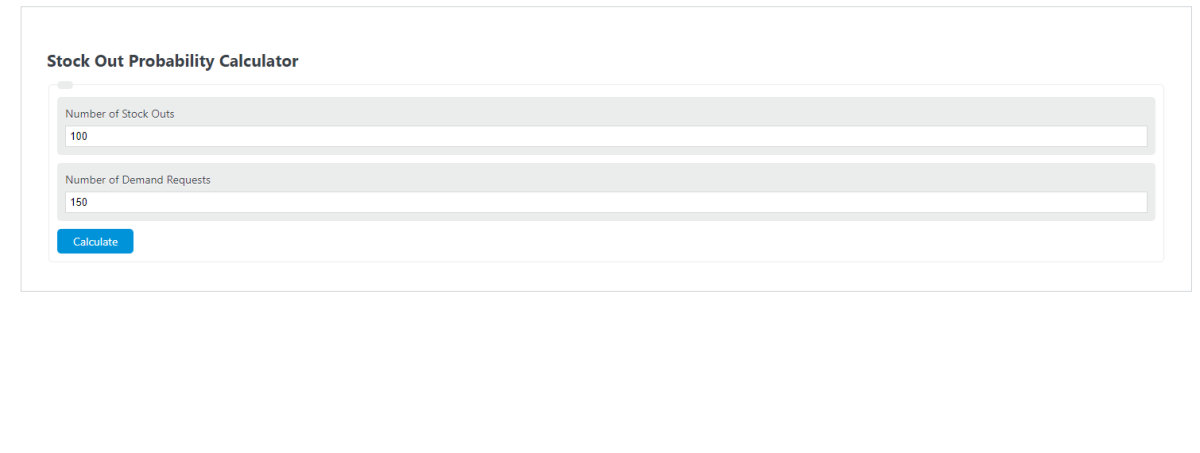Enter the number of expected stock-outs and the number of expected demand requests into the calculator to determine the stock-out probability.
- Optimal Stock Level Calculator
- Reorder Point Calculator
- Safety Stock Calculator
- Stocking Rate Calculator
- Inventory Shrinkage Percent Calculator
- Service Level Calculator
Stock Out Probability Formula
The following equation is used to calculate the Stock Out Probability.
PS = ES / ED * 100
- Where PS is the probability of a stock out (%)
- ES is the number of expected stock outs
- ED is the number of expected demand requests
To calculate the stock out probability, simply divide the number of stock outs by the number of demand requests, then multiply by 100.
What is a Stock Out Probability?
Definition:
A stock-out probability is the percentage chance of a product not being in stock when an order is placed. Stocks out probabilities are calculated by examining the length of time it takes to fulfill orders, the frequency of new orders, and the time between restocking orders.
A low stock-out probability indicates that an adequate inventory level is available to satisfy demand. A high stockout probability may indicate a need to increase inventory or reduce sales demand.
Trying to figure out how likely it is that your business will run out of a product can help you ensure that you have enough cash flow to keep your business running smoothly.
Having a good understanding of your stock out probability means that you can adjust your business plan to reduce its effect on your bottom line.
Your stock-out probability is affected by three factors: order volume, cycle time, and restocking frequency.
Each factor has a different but equally important effect on your overall stock-out probability. The higher the order volume, for instance, the more likely you are to run out of products on hand; however, cycle time and restocking frequency also play essential roles in determining how quickly you’ll run out of inventory if new orders keep coming in at their current rate.
